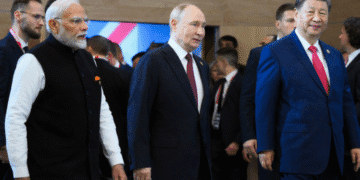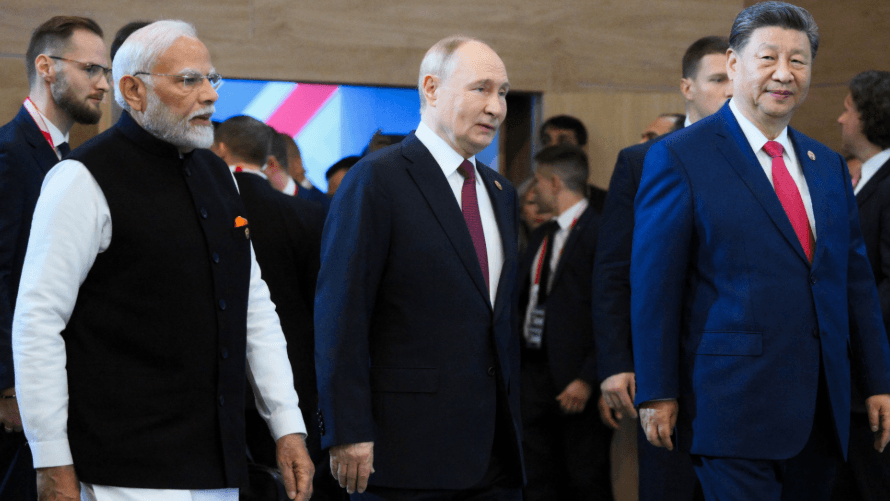Athira Sethu
Kochi, 10 Sep 2025
On Tuesday, U.S. President Donald Trump called on European Union (EU) leaders to charge China and India up to 100% tariffs under a plan meant to pressure Russian President Vladimir Putin. This appeal was made in a conference call with EU officials, including the EU’s sanctions envoy David O’Sullivan. The statement was confirmed by both a U.S. official and an EU diplomat, who wished to remain anonymous.
Trump’s proposal is predicated on the fact that China and India are two of the largest consumers of Russian oil. Continued purchases by these nations support the Russian economy to the extent that it is able to pursue its invasion of Ukraine, which commenced in 2022. The EU representatives were in Washington to negotiate on how the U.S. and EU can improve coordination of sanctions against Russia.
If the EU were to agree to put these tariffs on China and India, the U.S. would be ready to do likewise, said the diplomat. This would be a change of course for the EU, which has long been more inclined towards sanctions to exclude Russia than putting tariffs on other countries.
Trump has often threatened to increase tariffs on China and India because they continue to engage in oil trade with Russia. Prior to this past summer, he raised tariffs on India 25% partly due to its economic relationship with Russia, although he has yet to apply the more drastic tariffs he has previously talked about.
Trump has also complained about Europe not going far enough to break away from Russia. Although the EU is in the process of breaking its reliance on Russian energy, the EU imported about 19% of its gas from Russia last year. The EU has promised to eliminate this dependency entirely, but that is still a work in progress.
Later in the day, Trump tweeted that the U.S. and India are cooperating on cooperation to tackle trade hurdles and that he is eagerly awaiting to speak with Indian Prime Minister Narendra Modi on strengthening the relationship between the two nations.





















